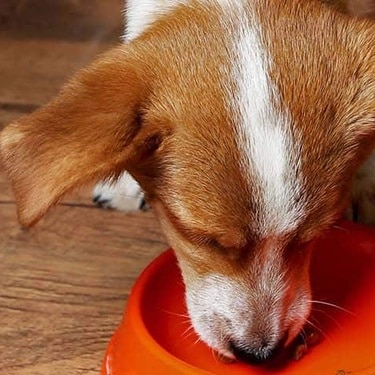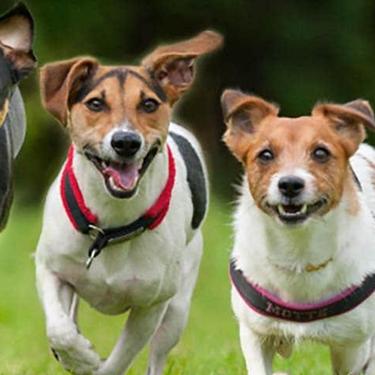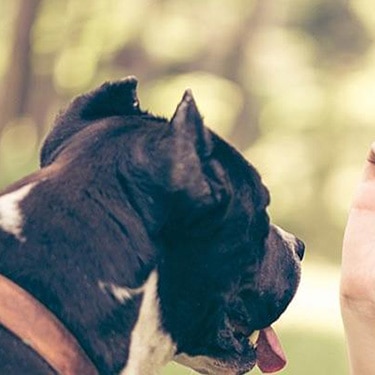
-
Find the right food for your petTake this quiz to see which food may be the best for your furry friend.Find the right food for your petTake this quiz to see which food may be the best for your furry friend.Health CategoryFeatured products
 Adult Chicken & Barley Recipe Dog Food
Adult Chicken & Barley Recipe Dog FoodSupports lean muscle and beautiful coat for adult dogs
Shop Now Adult 7+ Small & Mini Chicken & Brown Rice Recipe Dog Food
Adult 7+ Small & Mini Chicken & Brown Rice Recipe Dog FoodFor the unique nutritional needs of mature Small & Mini dogs
Shop Now Puppy Large Breed Chicken & Brown Rice Recipe
Puppy Large Breed Chicken & Brown Rice RecipeVital nutrients to support 5 essential building blocks for lifelong health
Shop NowFeatured products Adult Indoor Savory Chicken Entrée Cat Food
Adult Indoor Savory Chicken Entrée Cat FoodPrecisely balanced nutrition for indoor cats with the delicious taste of savory minced chicken
Shop Now Adult Tender Chicken Dinner Cat Food
Adult Tender Chicken Dinner Cat FoodPrecisely balanced nutrition in two delicous flavours to help fuel the energy needs of cats during the prime of their life
Shop Now Adult Perfect Weight Salmon & Vegetable
Adult Perfect Weight Salmon & VegetableOver 70% of cats lost weight within 10 weeks when fed this nutrition
Shop Now -
DogCat
- Cat Tips & Articles
-
Health Category
- Weight
- Skin & Food Sensitivities
- Urinary
- Digestive
- Kidney
- Dental
- Serious Illness
-
Life Stage
- Kitten Nutrition
- Adult Nutrition
Featured articles The Right Diet For Your Pet
The Right Diet For Your PetLearn what to look for in healthy pet food & nutrition, including ingredients, quality of the manufacturer, your pet's age, and any special needs they have.
Read More Water
WaterWater is the most important nutrient of all and essential for life. Animals can lose almost all their fat and half their protein and still survive, but if they lose 15% of their water, it will mean death.
Read More Pet Food Storage Tips
Pet Food Storage TipsWhere you store your cat and dog food can make a big difference in the quality and freshness once it is opened. Here are some common questions and recommendations for optimal storage for all of Hill’s dry and canned cat and dog food.
Read More -


Moving to a new home can be an exciting adventure for you, but for your dog, it often represents a significant change that can cause stress and anxiety. Dogs thrive on routine and familiarity, making relocation a potentially challenging experience. The good news is that with proper preparation and patience, you can help your dog settle into their new environment smoothly and confidently. Understanding how to transition a dog to a new home ensures their wellbeing during this important life change.
Preparing Your Home for the New Arrival
Setting up your new home properly before your dog arrives can make a tremendous difference in how quickly they adjust to their surroundings.
Begin by designating a quiet area where your dog can retreat when feeling overwhelmed. This sanctuary should feature a comfortable bed that smells familiar (ideally from your previous home), access to fresh water, and a few favourite toys for comfort. If your dog is crate-trained, include their crate as it provides additional security during times of change.
Ensure this area is in a quieter part of the house but not completely isolated from family activity. Dogs are social creatures and typically prefer to be near their family even when they need some space.
Dog-Proofing Your New Environment:
Before your dog explores their new home, take time to conduct a thorough safety check. Secure loose electrical cords, remove toxic plants, and store cleaning supplies in inaccessible cabinets. For homes with yards, inspect fencing for potential escape routes or gaps. Remove or secure items that could be knocked over or damaged during your dog's initial exploration phase.
Gathering Essential Supplies:
Preparation is key to a smooth transition. Have all necessary supplies ready before your dog arrives: familiar food and water bowls, their regular food (changing diet during a move adds unnecessary stress), treats for positive reinforcement, and a leash and collar with ID tags updated with your new address. Don't forget any medications your dog might need and cleaning supplies for potential accidents during the adjustment period.
The First Day: Making the Transition Smooth
The initial introduction to your new home sets the tone for your dog's adjustment process. A calm, structured approach helps create positive associations from the start.
First impressions matter. When you first arrive, keep your dog on a leash for a controlled introduction to the environment. Speak in a calm, reassuring voice while allowing your dog to sniff and explore at their own pace. Make a point to show them the location of essential resources—their water, food, and bed—and immediately take them to their designated toileting area to establish this critical routine.
Establishing a Routine from Day One:
Dogs find profound security in predictable routines. Maintain your previous schedule as closely as possible, feeding at familiar times and scheduling walks and toilet breaks when your dog expects them. Preserve the same rules, boundaries, and training routines your dog already knows. This consistency helps your dog understand that while the environment has changed, the fundamental structure of their life remains reassuringly the same.
Gradual Introduction to New Surroundings:
Resist the urge to give your dog immediate free access to the entire home. Start by introducing one room at a time, expanding their territory gradually as they demonstrate comfort with each new area. Consider using baby gates to temporarily block off sections of the house, and always supervise initial explorations. Remember to reward calm behaviour in new spaces with treats and gentle praise to create positive associations with each area of your home.

Recognising Signs of Stress and Anxiety
Even with careful planning, your dog may experience some stress during the adjustment period. Recognising these signs early allows you to provide appropriate support.
Being alert to stress indicators allows you to provide timely support. Watch for physical signs such as excessive panting, drooling, trembling, or unusual licking behaviours. Behavioural changes often include pacing, restlessness, increased vocalisation, house soiling (even in previously housetrained dogs), decreased appetite, and destructive chewing. Some dogs may become clingy while others might withdraw and seek isolation. Each dog expresses anxiety differently, so pay attention to any departure from your pet's normal behaviour.
How to Respond to Stress Signals
Your response to anxiety signals significantly impacts your dog's adjustment. Maintain a calm demeanour, as dogs are remarkably sensitive to your emotional state. Never punish stress-related behaviours—this only increases anxiety and damages trust. Instead, provide gentle reassurance and create positive distractions through familiar play or brief training sessions with commands they know well.
For dogs experiencing more significant stress, discuss supportive options with your veterinarian, such as calming aids or pheromone diffusers. Maintaining a nutritionally balanced diet like Hill's Science Diet provides the physical support needed during emotionally taxing transitions, as proper nutrition plays a crucial role in stress management.
When to Seek Professional Help
Contact your veterinarian or a professional dog behaviourist if:
Anxiety symptoms persist or worsen after several weeks
Your dog shows aggressive behaviour related to fear or stress
Your dog refuses to eat for more than 24 hours
House soiling continues despite consistent routine
Self-harming behaviours develop, such as excessive licking causing hot spots


Tasty Tips
Long-term Adjustment Strategies
While some dogs adjust quickly to a new home, others may need more time and support. These strategies promote successful long-term adjustment.
Building a Consistent Daily Routine
Consistency creates security for dogs during times of change and is perhaps the most powerful tool in your adjustment toolkit. Dogs thrive when they can predict what happens next in their day, as this predictability helps them feel in control of their environment despite the significant changes they're experiencing. Consistent routines include:
Wake, feed, walk, play, and sleep at similar times each day
Create a visual or written schedule that all family members can follow
Gradually transition to your ideal long-term routine if it differs from your previous one
Positive Reinforcement and Training
Reinforcing good behaviour helps your dog build confidence in their new environment by creating clear connections between actions and positive outcomes. Positive reinforcement can include:
Rewarding calm, relaxed behaviour in different areas of the house
Practicing familiar commands in new rooms to build confidence
Using high-value treats initially, then gradually reduce their frequency
Consider short, positive training sessions to strengthen your bond
Socialisation with Other Pets and People
Gradually expand your dog's social circle in the new environment to help them establish positive connections with their new community. Social interactions should be carefully managed during the adjustment period, as your dog may be more sensitive or reactive than usual. Start by:
Introducing neighbours and regular visitors one at a time
Allowing your dog to retreat if they feel overwhelmed
Creating positive associations with new people through treats and calm interactions

Tips for Helping Your Dog Settle In
These targeted strategies can significantly accelerate your dog's comfort in their new home.
Providing Mental and Physical Stimulation:
Physical and mental activity serve as powerful stress reducers during transitions. Begin exploring your new neighbourhood with short, pleasant walks that allow your dog to become familiar with surrounding scents and sounds. Incorporate puzzle toys and food dispensers to engage their mind and continue playing the games they already enjoy. Consider introducing a special new toy specifically for the new home to create positive associations with the space.
Using Familiar Commands and Cues:
Communication consistency provides essential security during times of change. Maintain the same verbal cues and hand signals your dog recognises from your previous home. Uphold identical rules and boundaries so your dog understands that while the environment has changed, expectations remain reassuringly consistent. Regularly practice familiar commands and generously reward correct responses to reinforce training and build confidence.
Ensuring a Balanced Diet and Proper Nutrition:
Nutritional support forms a foundation for managing stress during major life changes. Maintain your dog's regular food to prevent adding digestive upset to an already challenging situation. Ensure constant access to fresh water, particularly important as stressed dogs often drink more than usual. For dogs experiencing significant adjustment difficulties, consider specialised foods formulated to support wellbeing during transition periods. Monitor food intake carefully, as appetite fluctuations are common stress indicators that warrant attention.
FAQs About Dog Adjustment to New Homes
How long does it typically take for a dog to adjust?
Most dogs begin showing signs of adjustment within 1-3 weeks. However, complete comfort in a new environment can take anywhere from a few weeks to three months, depending on your dog's temperament, age, and previous experiences. Senior dogs and those with anxiety issues typically need more time to adjust. Be patient and look for gradual improvements rather than expecting an overnight transformation.
What can I do if my dog is not settling in?
If your dog continues to show significant signs of stress after several weeks:
Review and strengthen your consistency with routines
Increase exercise to help reduce anxiety
Create more positive associations with challenging areas of the home
Consider consulting with your veterinarian about temporary anti-anxiety supports
Work with a professional dog trainer or behaviourist for personalised strategies
Can a dog's diet affect their adjustment period?
Yes, nutrition plays an important role in how dogs handle stress. A consistent, balanced diet helps maintain physical wellbeing and energy levels during adjustment. Some dogs may experience temporary digestive upset due to stress, so maintaining their familiar food is important. Proper nutrition supports brain health and can influence mood and stress responses. If your dog shows sustained appetite changes or digestive issues, consult your veterinarian.
How do I handle nighttime anxiety in a new home?
Nighttime often intensifies adjustment difficulties for dogs in unfamiliar environments. For the first few nights, consider placing your dog's bed near yours if they show signs of distress. Establish and maintain a calm, predictable bedtime routine with consistent cues that signal it's time to rest. Environmental modifications like a gentle night light, soft background music, or a ticking clock can provide comforting sensory constants. Many dogs find remarkable comfort in having an item of clothing carrying your scent nearby, creating a sense of security even when you're asleep.
Is it normal for dogs to have bathroom accidents during adjustment?
Yes, even previously housetrained dogs may have accidents during the adjustment period. This typically stems from stress, confusion about the new environment, or uncertainty about where to go. Respond by frequently taking your dog to their designated toileting area, especially after meals, naps, and play sessions. Never punish accidents, as this increases stress. Instead, clean thoroughly with enzymatic cleaners and reinforce proper toileting with praise and treats.
Moving with your dog requires patience, preparation, and understanding. Remember that each dog adjusts at their own pace, and some may take longer than others to feel completely at home. By creating a structured environment, maintaining consistent routines, recognising stress signals, and responding with appropriate support, you can help your dog successfully transition to their new home.
With time and positive experiences, your dog will come to associate the new space with safety, comfort, and happiness—building new memories together in a place that truly feels like home for both of you.


Ilze holds a Bachelor of Veterinary Science (BVSc) from the University of Pretoria and a Master of Business Administration (MBA) from the University of Wollongong. She has over 20 years experience working in the vet industry both as a clinician in veterinary practice and at multinational animal health companies.
Related products

Vital nutrients to support 5 essential building blocks for lifelong health

For the unique nutritional needs of mature Small & Mini dogs

Supports lean muscle and beautiful coat for adult dogs

Supports energy level and beautiful coat in mature dogs who prefer smaller kibble
Related articles

Selecting the right food for your puppy is a key to quality nutrition and a long, healthy life., Learn more about how to select the right puppy food.

Though it may seem like your four-legged friend loves nothing more than to nap on the couch, dogs need regular exercise to stay healthy just like people do.

Learn what you can feed your pregnant or nursing dog to keep her and her new pups healthy.

A dog with a sensitive stomach has special needs. Learn more about sensitive stomach symptoms in your dog, what you can do to help sooth your pet’s insides and get recommendations on sensitive stomach dog food.

Put your dog on a diet without them knowing
Our low calorie formula helps you control your dog's weight. It's packed with high-quality protein for building lean muscles, and made with purposeful ingredients for a flavorful, nutritious meal. Clinically proven antioxidants, Vitamin C+E, help promote a healthy immune system.
Put your dog on a diet without them knowing
Our low calorie formula helps you control your dog's weight. It's packed with high-quality protein for building lean muscles, and made with purposeful ingredients for a flavorful, nutritious meal. Clinically proven antioxidants, Vitamin C+E, help promote a healthy immune system.

